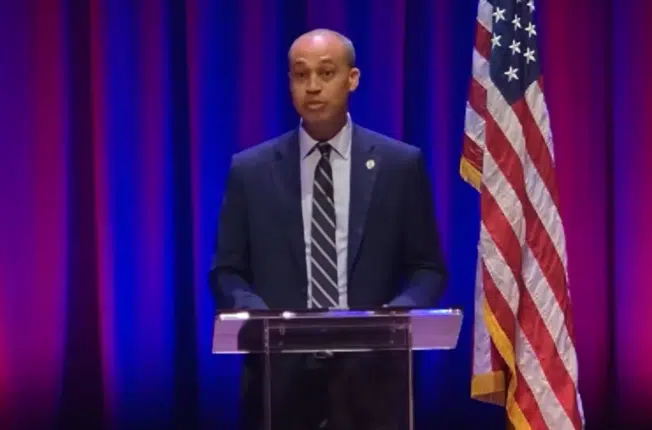By Howard Rich –
No public official has been more integrally involved in the federal government’s “Great Intervention” than U.S. Federal Reserve Chairman Ben Bernanke.
Over the course of three years (and two administrations), Bernanke has aggressively and successfully lobbied for trillions of dollars in government bailouts, deficit spending, loan guarantees and “quantitative easing.” From his perch at the secretive Fed, Bernanke has also kept interest rates artificially low by investing heavily in treasuries — although these low borrowing costs have chiefly benefited the government, not the American people.
This summer, however — as the failure of government “stimulation” became apparent — Bernanke’s language began to undergo a subtle shift. Testifying before the U.S. Senate Banking Committee in July, he acknowledged that the European sovereign debt crisis — which our nation is in imminent danger of replicating — was playing a key role in the ongoing global economic malaise.
Unsustainable borrowing had created debt — not prosperity. In a recent Rhode Island speech Bernanke took his comments a step further, urging Congress to rein in its annual deficits — which he said were “on an unsustainable path.”
“We should not underestimate these fiscal challenges,” Bernanke said. “Failing to respond to them would endanger our economic future.”
Rather than responding, however, President Barack Obama wants to continue spending. In fact, his proposed budget calls for America’s $13.6 trillion debt to grow by an average of $1.06 trillion each year over the next ten years. Amazingly, even this massive incursion of new debt is not enough for some of his allies. In a recent column in the Financial Times entitled, “America needs stimulus, not virtue,” liberal financier George Soros argues that there is a “strong case for further stimulus.”
“To cut government spending at a time of large-scale unemployment would be to ignore the lessons of history,” Soros writes, arguing in favor of additional taxpayer-funded largesse aimed at rectifying “the imbalance between consumption and investment.”
Soros neglects to point out that Obama’s “stimulus” didn’t fund either consumption or investment — it was a handout to public sector unions and foreign “green corporations” coupled with a one-year extension of salaries and benefits to public sector employees. It didn’t build dams, bridges or utilities — it created a mountain of new debt while perpetuating the same culture of entitlement that has Europe poised to plunge off of a fiscal cliff.
Consider these numbers: Twenty million Americans are now employed by the government. More than 34 million Americans are receiving Social Security and Medicare checks. Another 48 million Americans are enrolled in Medicaid — a number that will increase rapidly as “ObamaCare” forces individuals from their private plans.
As these numbers climb, so do the immediate funding obligations and the long-term unfunded liabilities associated with them. And to these costs we must add subsidized industry, transportation, agriculture, real estate, education, defense and energy — the fruits of government extending its tentacles deeper into every aspect of American life.
No wonder Obama and Soros refuse to back down from trillion-dollar deficits and “second stimulus” fantasies. They can’t — at least not without dramatically shifting the balance of economic provision from the public sector back to the private sector. Yet while visions of new spending and a “robust recovery” dance in their heads, Moody’s has indicated that the tipping point for a downgrade of U.S. credit will come no later than 2018.
With his recent comments, Bernanke is finally acknowledging this impending reality and urging policymakers to take corrective action — assuming “corrective action” doesn’t find them first.
Either way, at this point the folly of government “stimulation” should be every bit as painfully self-evident as the need to correct it before it’s too late.
The author is chairman of Americans for Limited Government.







